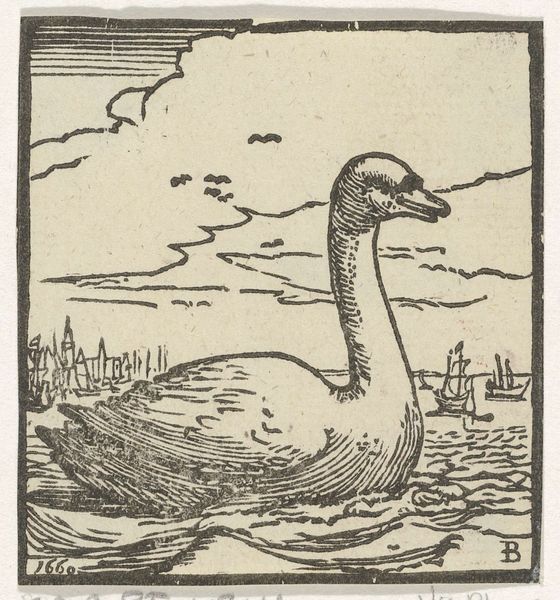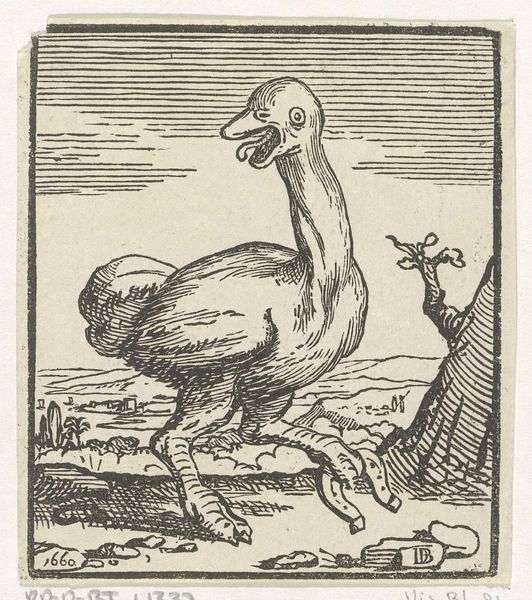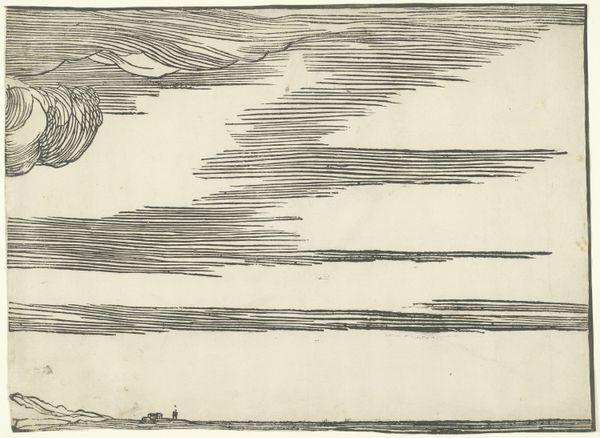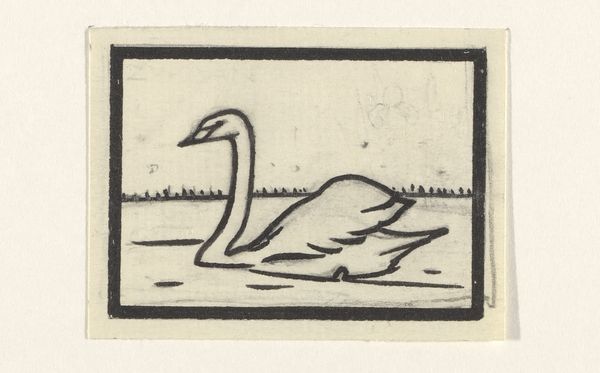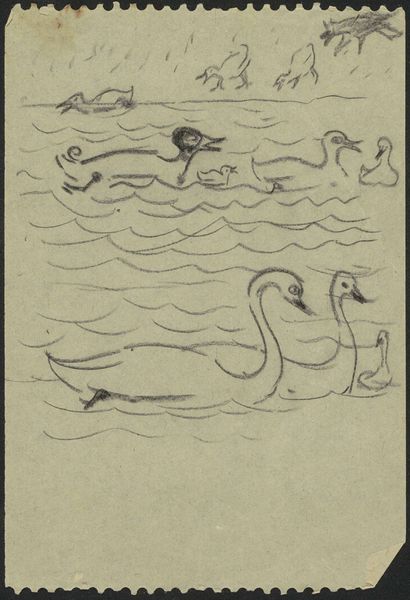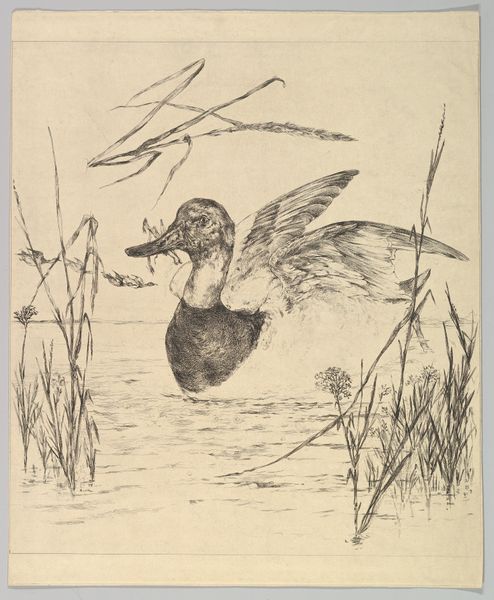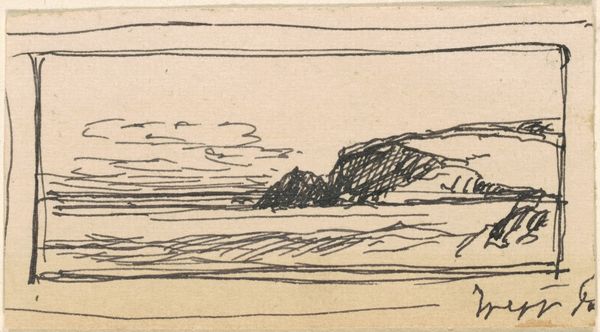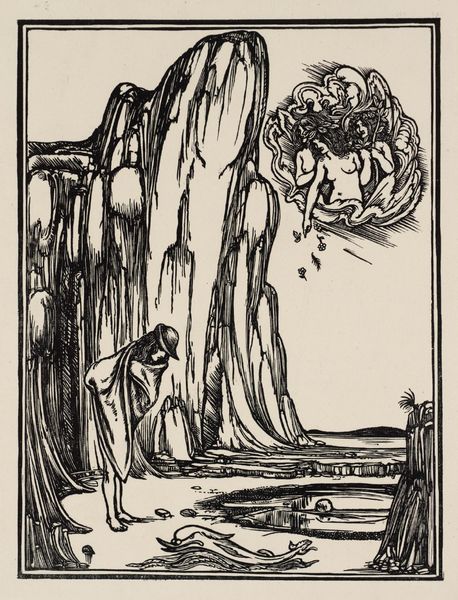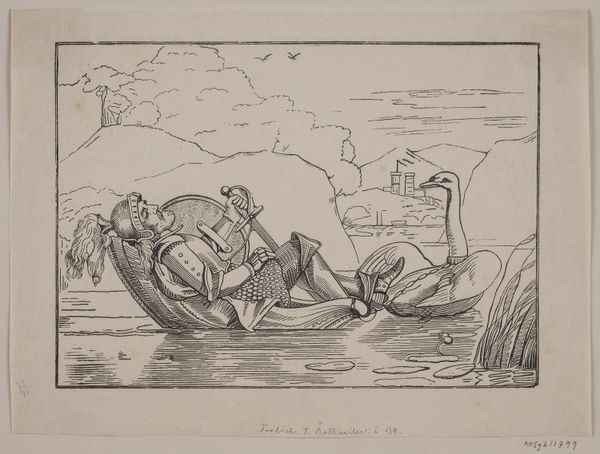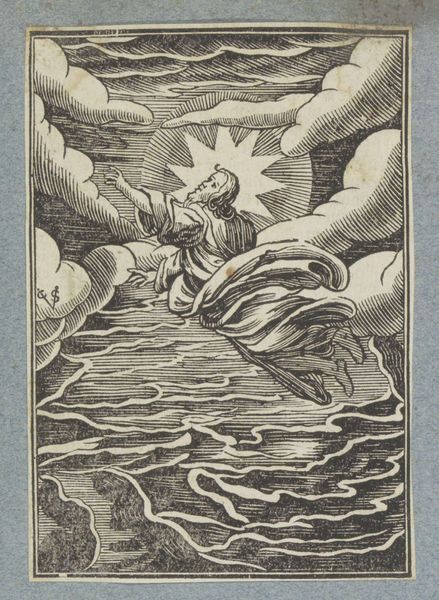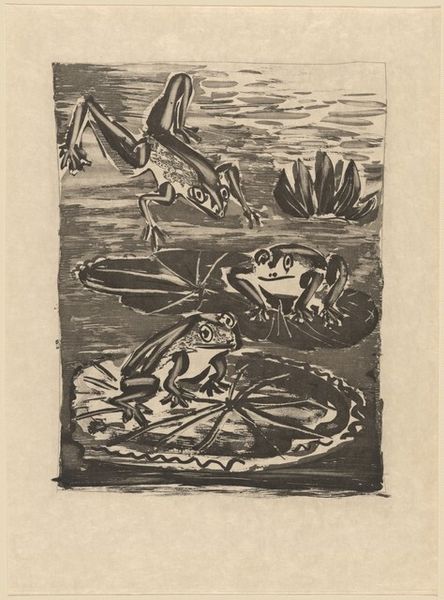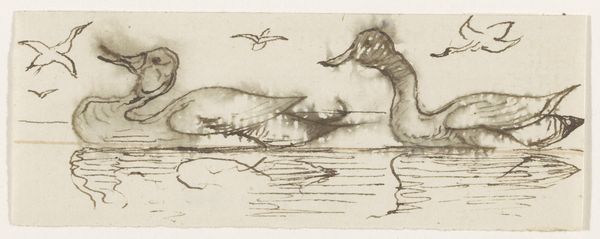
print, woodcut
#
dutch-golden-age
# print
#
pen illustration
#
landscape
#
figuration
#
woodcut
Dimensions: height 64 mm, width 59 mm
Copyright: Rijks Museum: Open Domain
Editor: So, this is Dirck de Bray's "Two Swimming Ducks," a woodcut from 1662. It’s so simple, almost graphic. I’m curious about what a deeper look might reveal. What stands out to you about this piece? Curator: For me, the woodcut immediately draws attention to its production. It's not just a picture of ducks, but an artifact born from the specific constraints and possibilities of the printing process. The stark lines, the absence of tonal gradations – they highlight the artist's direct engagement with the wood. What kind of labor went into this? What tools did de Bray employ? And more broadly, who would consume this kind of print, and what purpose would it serve? Editor: That's a different angle than I expected! I was looking at the composition, the way the sun bursts from the horizon… But you're right, it IS very consciously made. What kind of impact did those limitations have? Curator: Exactly. The choice of a woodcut isn’t arbitrary. The readily available, cheap material means wider distribution; less precious than an etching or engraving. It becomes crucial to consider who had access to these images. We also have to question if it served an educational purpose, or even a decorative function. The woodcut also democratizes image creation; it’s repeatable and challenges notions of uniqueness or the artist’s hand as singularly masterful. Editor: So, thinking about the material, about wood and printing…It makes the art feel more…connected to daily life somehow. I like that. Curator: Precisely! It compels us to move away from thinking of "art" as divorced from the material conditions of its creation. Editor: I’ve definitely learned a lot by considering the material reality of it all. Curator: Likewise, thinking through your fresh eyes reminds us to question established hierarchies around art and production.
Comments
No comments
Be the first to comment and join the conversation on the ultimate creative platform.
